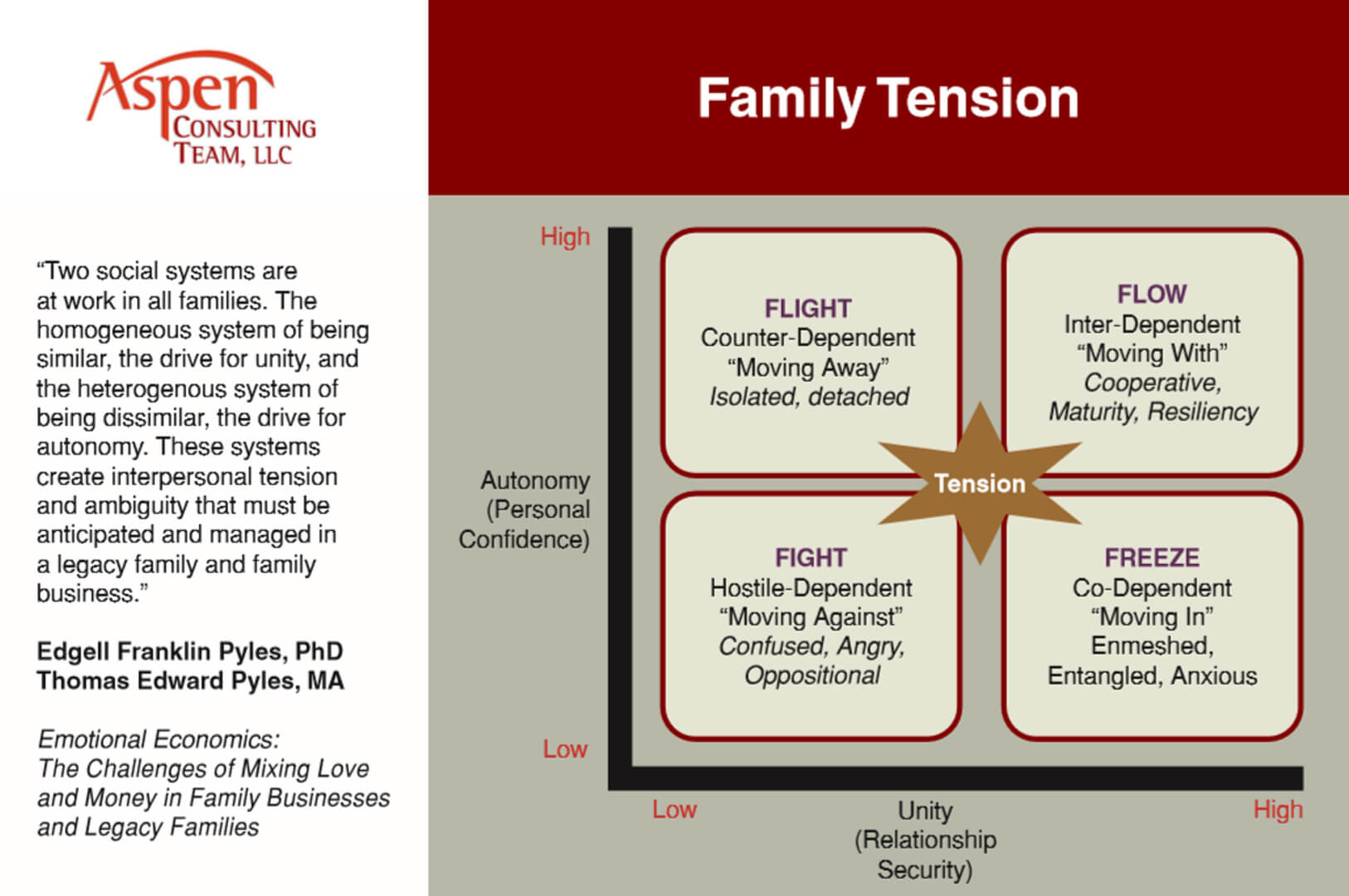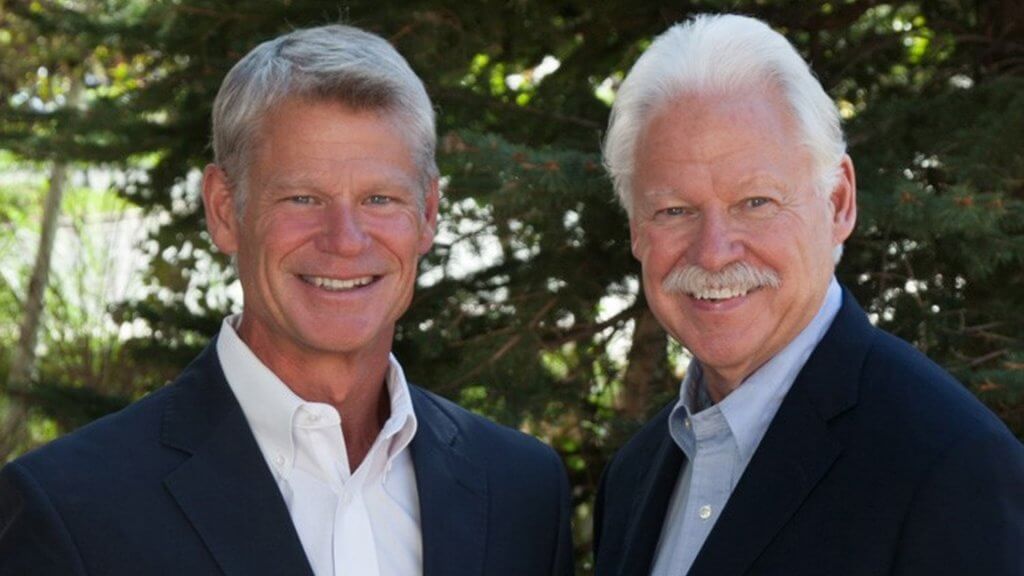
Emotional Economics: The Challenges of Mixing Love and Money in Family Businesses and Legacy Families
Thirty years ago, the family business started by Daniel’s grandfather and great uncle was sold. Daniel and his three siblings received nearly sixty million US dollars each, as did each of their cousins. In 2016, Daniel, who had created a successful real estate and development business and on the advice of his financial and tax advisors, transferred to his four adult children twenty-five million US dollars each. The age range for the adult children spanned nine years, and one daughter worked in Daniel’s business. From the day gifting was announced it has resulted in family disruption. The surface discord resulted from a perceived economic injustice concerning “the time value of money” since all siblings received an equal share rather than a share based on their age. But the deeper disharmony stemmed from an unresolved historical emotional impasse between the father and one of the adult children dating back to the child’s teenage years.
As Aspen Consulting Team, (ACT) we help members in family businesses and legacy families address the psychological dynamics of love and money, the interplay between emotions and economics, in the family system.
Love and money are symbiotic and immiscible. They are connected, but do not mix naturally. The wrong mixture results in entitlement, disruption, and conflict; the correct mixture results in gratitude, opportunity, and resilience. The wealth connection in a family business and/or legacy family requires
Emotional Economics: The Challenges of Mixing Love and Money in Family Businesses and Legacy FamiliesMar19081
adult children to stay integrated in their family of origin much longer than typical families. The financial interdependence provides great benefits and at the same time creates complexities. A basic operating principle in our work is that the deeper the economic interconnections the higher the potentiality for emotional conflicts.
Every family business and/or legacy family is a system, a combination of small subset systems (individuals) connected to mid-size systems (family units), nested within larger systems (extended and generational family units), and linked to much larger systems (business and wealth management). Everything is connected and influenced by everything else. Within this system transitioning wealth takes place at two levels where the highest goal is to provide an inheritance without creating entitlement.
• The “external” work is wealth creation and management. The task of continuing the vision set by the founders, operating with the values that made the family successful in the first place, protecting assets, defining financial goals, policies, and strategies, adjusting to taxes and market changes, understanding investments and ROI, implementing shareholder agreements and distributions, creating foundations and estates, and increasing the financial portfolio. Legal and financial advisors help with this work.
• The “internal” work is relationship harmony and management. The task of connecting and inspiring family members, strengthening the family culture, adapting to generational values, maintaining agreements, managing interpersonal stress, working as a team, responding to special demands, and enjoying the process as members of each generation face opportunities and transitions. This is the space in which ACT works.
There are always two parallel objectives in our work. The first objective is to create guidelines to “prevent the emotional tail from wagging the economic dog.” The second objective is to “not cut off the emotional tail.” Emotions, when accessed correctly, are powerful guides and cannot be ignored without damaging relationship harmony and overlooking important decision-making data. There are more emotions in an economic experience than meets the mind’s eye.
Emotions are actions, many of them are public and visible to others as they are expressed in body language or are verbalized. Feelings, on the other hand, are always hidden, unseen and perhaps unrecognized, to anyone other than their rightful owner. Feelings are the most private property we own. Emotions precede feelings, much to the common mistaken view. “We have emotions first and feelings after because evolution came up with emotions first and feelings later.”2 We, and our emotional system, are designed to solve the basic problem of how to continue life by being either competitive or cooperative and on the economic survival level this involves money.
A study conducted with children, ages 3 to 6 years, showed that they did not understand the economic value of money, but they comprehended its emotional value. The first group sorted coins and banknotes, while the second group sorted buttons and candy. The children who worked with money demonstrated an increase in egotistical behaviors, were less eager to help the researchers, corralled more awards for themselves, were less likely to share their rewards with the other children, but were more persistent in completing individual tasks. Handling money reduced feelings of helpfulness and generosity while increasing perseverance and effort. These results are very similar to the results of a comparable study that looked at adult behavior. According to Agata Gąsiorowska, economic psychologist and a coauthor of the study:3
“Money is such a strong symbol in the world based on economic exchange that even small children are influenced by its significance. Money causes people to switch from the view of the world that values close relationships to the world that values market exchange, where the notions of ‘me’ and ‘my gain’ are in the center.”
Emotions, often considered “gut feelings” or conscious experience, really involve many systems
within our brain. Emotions create a burst of activity devoted to one thing, survival. Emotions trump non-emotional events, like thought, reason, and decision-making, even in the most rational analyst and business leader, because they are older in the human developmental process than economics. Emotions kept our ancestors alive long enough to create and give us an inheritance. Emotions, even those in our memory system, trigger certain features, feelings, and stimuli that are designed for homeostasis.
Homeostasis is a self-regulating process by which our biological and psychological systems try to maintain stability while adjusting to conditions that are optimal for survival and success. In love and war, as in family and business, when homeostasis is successful, individual and collective life continues and flourishes. There are “natural triggers” like the sight, sound, and smell of a predator and “learned triggers” like the sight, sound, and smell of money that aid us in the pursuit for homeostasis.4
About 10,000 years ago, when the first farmer created more than his or her family could consume, the economy of the marketplace began. Before the agricultural age, our ancestors were daily hunters and gatherers, collecting and consuming without the ability or surplus to “store up” resources. When farmers took their extra bags of gain to the marketplace they needed a symbol of exchange. In time, this symbol became money.
From that time forward, there are few interactions or decisions in a legacy family that do not involve money and a drive for the family to flourish. The recent college admission scandal in the United States is a brazen example.
Money is an emotional trigger in families and how we react to it may be either positive or negative. In order to have a positive environment, family leaders must work toward stability between two social systems that continuously change as individuals change. The two social systems are the homogeneous system of being similar, the drive for family unity, and the heterogeneous system of being dissimilar, the drive for personal autonomy. These systems create interpersonal tension and ambiguity, along with creativity and drive that must be anticipated and proactively managed in a legacy family and family business. Wishing that anxiety or conflict would depart the family system or that love and harmony would show up is usually not enough.
The tension among family members is from four psychological positions; Fight, Flight, Freeze and Flow . Three positions, Fight, Flight, and Freeze , are an extension of our evolutionary survival system. The fourth area, Flow, is the way to happiness and success.5 It requires psychological awareness, behavioral adjustment, and positive action on the part of family members and leaders and is difficult to create and maintain as family members grow and change.

• Fight: When both personal confidence (autonomy) and relationship security (unity) are low, one’s psychological position is hostile-dependent. This shows itself in behaviors of “moving against” others in the family or family system. The feelings and behaviors expressed are often confusion, anger, resistance, and opposition.
• Freeze: When personal confidence (autonomy) is low and relationship security (unity) is high, one’s psychological position is co-dependent. This shows itself in behaviors of “moving in” with others in the family or family system. What we often see is enmeshment, clinginess, entanglement, low selfesteem, fear, and anxiety.
• Flight: When personal confidence (autonomy) is high and relationship security (unity) is low, one’s psychological position is counter-dependent. This shows itself in behaviors of “moving away” from others in the family and/or family system. This is seen in acts of isolation and detachment, which can look like independence, if it were not for the financial dependence.
• Flow: When both personal confidence (autonomy) and relationship security (unity) are high, one’s psychological position is inter-dependent. This shows itself in behaviors of “moving with” others in the family and/or family system. This is experienced as cooperation, maturity, accountability, and resilience. This, of course, is the most optimal position for family members.
For economic success and relationship harmony within a legacy family or family business, family members must purposefully address emotional historical impasses, resolve sibling rivalries, find comparable values, and work toward mutual goals. The psychological tools for doing this work are what we have termed “thick trust” and “mature adult communication.”
Long-term success in family and business life requires a willingness to trust one another. The question is how we measure the trust. Scientific research shows that most people’s accuracy in discerning if another person can be trusted is imprecise. Much of the time, we have weak or no guidelines other than a set of emotional clues we have used in the past. Trust is dynamic—not static. The more we have at risk, the greater the need for trust. It is helpful to think of trust in three levels.6
1. One-Way Trust. Only one person has trust on the line. If the other person cannot be trusted to follow through on promises or commitments the relationship ends, as do any potential gains or losses.
2. Mutual Trust. This is a reciprocity style, often called quid pro quo and “tit for tat,” for regulating equilibrium in transactional relationships. It is the most familiar type of trust in business, worked out among and between the same parties over a long period of time. Both parties play the roles of giver, taker and matcher, and exchange these roles for mutual benefit. When trust is broken, the relationships and transactions end.
3. Thick Trust. This is the highest form of trust and is required for family members to work together for the long-term. Family business relationships are complex because they occur across different settings and include a diverse series of interactions, both personal and professional. Action at one level may have ramifications at other levels, and every action has the potential for benefit or harm. Trust at this level, like in a marriage, requires the strength, resilience, and skill of mature character to overcome and forgive mistakes.
Trust and trustworthiness are forms of social and relationship capital. A subjective way to think about your trustworthiness or that of another person in a family business is the following formula. Personal Character plus Competency Skills divided by Self-Interest plus Psychological Awareness plus Behavioral Adjustment determines Thick Trust.
TT=[(PC+CS)÷SI]+(PA+BA)
A solid foundation of trust allows communication to be clear, constructive, and proactive, what we call Mature Adult Communication (MAC). We suggest that family members have a formal agreement to use MAC when important economic and emotional decisions need to be made. The first step in MAC is to clearly define the issue. Much of what is called “failure to communicate” is not having a clear and collective understanding of the problem or issue. The second step is to explore all the psychological dynamics, emotions, and feelings around the issue. This is often the hardest step and may require outside consultation. The third step is to have full commitment by all family members involved in the issue to the decision-making process (who, how, and when a decision will be made) and to make a clear and firm decision, with an evaluation process if necessary.
MAC eliminates what statistician and author Nassim Taleb calls narrative fallacy, “ a wrong ruler will not measure the height of a child. ”7 This is how we fool others and ourselves by a flaw in a story of the past, often emotional, which shape our decisions for the future. An accurate diagnosis of the problem sets the stage for the correct treatment. Decisions that address the wrong description of the situation can be made with a high level of determination, confidence, and authority, but will still be defective and require correction at a later time with greater expense.
Creating, managing, and transitioning wealth within a family is a balancing act. It requires addressing the struggles not only among and between individual family members, but the tension created by money. The connections from our emotional system to our cognitive system are stronger than the connections from our cognitive systems to our emotional system. If this were not true, Daniel’s adult children would not have entered into the discord that has alienated and estranged family members.

Edgell and Tom, a father and son team, consult with family businesses on leadership strategies, particularly succession, and with legacy families on the complexities of mixing love and money. They are the co-authors of MAPS for Men: A Guide for Fathers and Sons and Family Businesses. Fourth generation business owner Charles S. Luck, IV, wrote, “MAPS for Men is one of the most comprehensive guides to families in business that I have ever seen.”
“Edgell and Tom weave a tapestry of insight for anyone seriously interested in building family relationship bridges that endure generational transitions.” Dennis Carruth, President, Carruth Properties Company.
“I have clearly seen results. In all cases it is an inflection point to a fresh and positive perspective.” Chris Branscum, Family Office Advisor, JD, CPA.
“I have worked with Edgell for more than twenty-five years. He has provided counsel to our family, including our two adult sons, my business, and my YPO group.” James Light, Chairman, Chaffin Light Management Company.
“Our family legacy is now in the fifth generation. I truly appreciated Edgell and Tom’s work. The lessons learned will bear fruit for many years and generations to come.” David Hardie, Founder and CEO, Hallador Management, LLC.
“The psychological and spiritual counsel offered by Edgell and Tom has proved very helpful to my family and business.” Jeff Wandell, Founder and CEO, Prairie Gardens and Jeffrey Alan’s.
“Dr. Edgell came into my life in a time when I had failed and did not like myself in many ways. He helped me, at the age of 58, on a new journey of bliss.” M. Ray Thomasson, PhD, President, Thomasson Partner Associates, Past President, American Association of Petroleum Geologist, Past President, American Geological Institute.
“Edgell enriches lives of those he touches in a most profound way.” Paul Schorr, Past President, Chief Executives Organization.
Sources:
1. Erik Erickson, Identity, Youth, and Crisis.
2. Antonio Damasio, Looking for Spinoza: Joy, Sorrow and the Feeling Brain.
3. The study was conducted by an international research team, including: Agata Gąsiorowska, Tomasz Zaleśkiewicz, and Sandra Wygrab, SWPS University in Wrocław, Lan Nguyen Chaplin, University of Illinois, and Kathleen D. Vohs, University of Minnesota.
4. Joseph LeDoux, The Emotional Brain, The Mysterious Underpinnings of Emotional Life.
5. Mihaly Csikszentmihalyi, Flow, The Psychology of Optimal Experience.
6. Elinor Ostrom and James Walker, editors, Trust & Reciprocity, Interdisciplinary Lessons from Experimental Research.
7. Nassim Taleb, “A Map and Simple Heuristic to Detect Fragility, Antifragility, and Model Error.”























